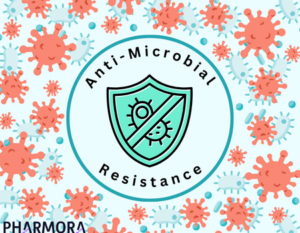 By Hannah Kerfoot
By Hannah Kerfoot 
What are anti-microbials?
Anti-microbials are products that help to fight infections caused by microscopic pathogens, such as bacteria, fungus and viruses.
Before there was even an understanding of such pathogens and how they caused infections and diseases, people were using antibiotics. Early civilisations used specific herbs and plant extracts to treat infections and wounds without knowing these contained anti-microbial ingredients. However, despite this ancient form of medication, some of the deadliest diseases before we had scientific understanding in the 20th century were caused by bacteria, which we are currently able to treat.
The introduction of penicillin was ground-breaking after it was famously discovered by accident in 1928 by Alexander Fleming. Since then, hundreds of different antimicrobials have been discovered and developed, leading to easier and safer surgeries as well as swifter recovery from infections. The average human lifespan has been extended by 23 years due to antibiotics (Hutchings et al., 2019), a remarkable feat which shows just how important they are for overall human health.
However, as human medical scientific progress has advanced, pathogens’ resistance to antimicrobial products has seemed to have kept pace. A worrying amount of Anti-Microbial Resistance (AMR) has been developing over recent years, with so-called ‘superbugs’ or ‘super strains’ of what used to be mundane bacteria rapidly spreading through communities. Methicillin-resistant Staphylococcus aureus (MRSA) is a well-known example of this, one which has broached the general public’s media awareness.
But where does this AMR come from?
Antibiotic abuse and misuse are major drivers for the development of AMR, since every time an antibiotic is administered, there is a risk of developing a resistant strain. AMR can develop when people don’t finish a course of antibiotics properly, and over prescription by doctors is another contributing factor, with people being given antibiotics for symptoms that wouldn’t have needed it, thus creating more chance for the development of AMR strains.
In some developing countries, there have been problems with a lack of access to proper antibiotics for animals, so unfortunately human antibiotics are used instead, which increases the risk of humans developing the same resistance through their diet. Finally, there is a problem with poor sanitation and contamination in some countries. In the UK, through AMR farm waste being dumped into rivers, there is evidence of AMR strains of superbugs in the river waters.
What are the consequences of AMR?
The O’Neill report in 2016 showed that AMR could cause 10 million extra deaths by 2050 if no action is taken. If AMR continues on this trend, and the antibiotic and antimicrobial drugs scientists have worked so hard to develop become ineffective, then human health could be reverted to a time before their existence. Once again, surgeries and infections will become incredibly dangerous. Even the simplest operation would have the potential of causing a life-threatening infection. Those 23 years that have extended the average human lifespan might be taken back once again. Not only that, but if an AMR superbug does develop and is highly transmissible, we might be looking at the next global pandemic.
What can be done / what is being done?
It isn’t all doom and gloom, working to combat this AMR problem are many scientists across multiple countries, as we witnessed in the BioInfect conference we attended in Liverpool earlier this year. Co-operation and development for the greater good of global health could be what makes the difference in our fight against this issue.
Hutchings M., Truman A., Wilkinson B. (2019) Antibiotics: past, present and future, Current Opinion in Microbiology, volume 51, pp. 72-80 ( Antibiotics: past, present and future – ScienceDirect )